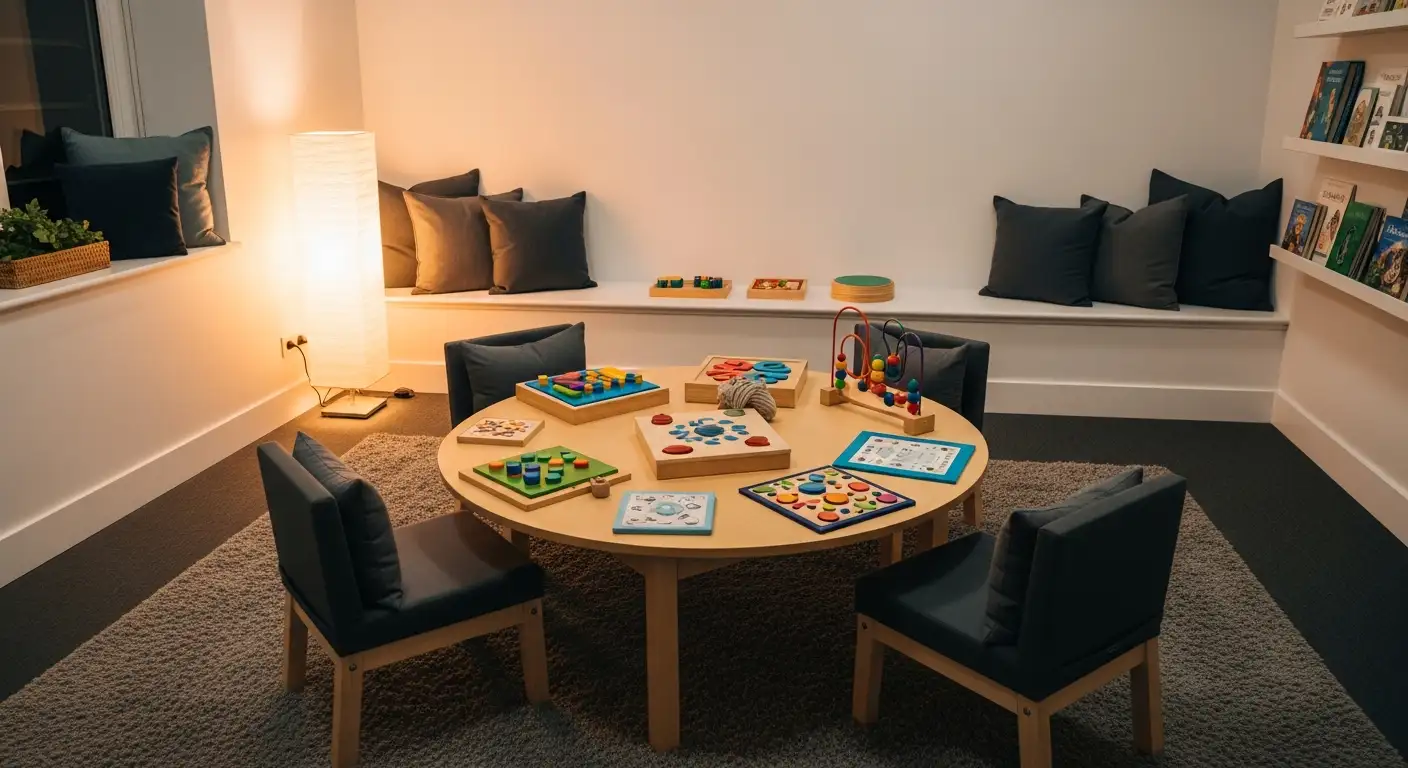Why Consistency is the Foundation of Successful ABA Therapy
Applied Behavior Analysis (ABA) therapy is a structured, evidence-based approach that aims to teach children important skills and reduce problematic behaviors. Central to the success of ABA is maintaining consistency across all aspects of therapy and daily routines. This article explores why consistency is vital, how it influences learning and behavior, and strategies for ensuring reliable implementation across environments and caregivers.
The Role of Consistency in Skill Acquisition and Generalization

How does consistent practice facilitate learning in multiple settings?
In Applied Behavior Analysis (ABA), practicing skills consistently across various environments is essential to reinforce learning. When children encounter the same expectations, prompts, and reinforcement strategies during therapy, at home, and at school, they build stronger connections and understanding of behaviors. This regularity accelerates skill acquisition because it encourages repetitive practice, which helps embed new behaviors into the child’s daily routine.
Consistency in applying treatment plans and strategies ensures that children receive uniform cues and responses. This standardization minimizes confusion, making it easier for children to grasp what is expected of them. As a result, children can practice and master skills faster, leading to quicker progress. For example, if a child is working on requesting a break with visual cues, consistent reinforcement in different settings helps them understand that the skill is useful everywhere.
Why is generalization so important for real-world use?
Generalization is a fundamental goal in ABA therapy. It refers to a child's ability to use skills learned in therapy across different environments, situations, and with various people. This transferability is crucial because skills that only work in therapy sessions or a specific setting have limited practical value.
Achieving generalization requires consistent practice beyond the clinical environment. Reinforcing behaviors in natural settings, like at home or school, ensures that children can rely on these skills in daily life. For instance, a child who learns to request a break through visual cues should be able to do so comfortably at home, in the grocery store, or at a friend's house.
How does consistency help children transfer skills across home, school, and community?
Maintaining consistency across differing environments and caregivers creates a seamless experience for children. When therapists, parents, and teachers all use similar reinforcement methods and maintain structured routines, children recognize patterns and understand that the skills they learn are relevant everywhere.
This uniform approach helps reduce hesitation or confusion that might arise from inconsistent responses. For example, a child who learns to use a specific phrase to ask for help at school, with reinforcement from teachers, will more likely use the same phrase at home or in the community if all caregivers promote its use.
The collaboration among caregivers and consistent application of behavioral techniques foster the child’s ability to generalize skills comprehensively. This consistency ultimately supports long-term success, independence, and smoother transitions across different settings.
Additional Insights on Consistency in ABA
Implementing consistent ABA interventions involves structured routines, standardized protocols, and regular communication among all individuals involved in the child’s care. These combined efforts not only reinforce behavior changes but also create a predictable, secure environment that reduces anxiety.
An example scenario illustrates a child learning to request a break using visual cues across therapy, home, and school. Such consistent reinforcement helps the child see the usefulness of the skill in every aspect of their daily life, enabling them to become more autonomous.
Research shows that ongoing, individualized, and consistent ABA services promote better behavioral outcomes and skill retention. Consistency also plays a critical role following transitions, such as returning to school after summer break, by easing adjustment and promoting continued growth.
In summary, maintaining consistency—through repetition, structured routines, and collaboration among caregivers—is vital in ABA therapy. It accelerates learning, supports skill transferability, and leads to meaningful, lasting improvements in children's behavior and independence.
| Aspect | Description | Additional Details |
|---|---|---|
| Practice Frequency | Regular, repeated practice in multiple settings | Helps reinforce skills and facilitate generalization |
| Reinforcement Consistency | Same reinforcement strategies used everywhere | Prevents confusion and promotes learning |
| Routine and Structure | Predictable routines create a safe environment | Reduces anxiety and promotes good behavior |
| Caregiver Collaboration | Communication among therapists, parents, and teachers | Ensures uniform responses and expectations |
| Skill Transfer | Applying learned skills across settings | Achieved through consistent reinforcement and routines |
| Addressing Behavioral Challenges | Consistent strategies help manage behavior issues | Especially important after routine changes like summer break |
Effective ABA therapy hinges on the consistent application of strategies by all involved. This unified approach ensures that children develop skills more efficiently, transfer those skills across various routines and environments, and ultimately achieve greater independence and success.
Reinforcement and Behavioral Stability Through Consistency

Why is consistency important in positive reinforcement?
In ABA therapy, consistent reinforcement plays a crucial role in shaping children’s behaviors. When reinforcement strategies are applied consistently, children receive clear signals about what behaviors are expected and appreciated. This predictability helps them feel safe and secure, especially in unfamiliar environments or when routines change.
Children thrive with clear boundaries and expectations. Consistency in how caregivers, teachers, and therapists respond to behaviors strengthens understanding and helps solidify positive habits. For example, if a child receives praise every time they request a break appropriately, across home, school, and therapy sessions, they are more likely to repeat that behavior.
Furthermore, a consistent approach fosters a sense of trust between the child and their caregivers or therapists. This bond encourages the child to engage more confidently in learning and social interactions. Collaborative communication among all adults involved ensures that reinforcement is unified, which leads to more effective behavior development.
Overall, maintaining consistency creates a stable environment essential for children’s emotional wellbeing and skill growth. It helps children develop self-regulation, confidence, and socially appropriate behaviors, making learning both effective and positive.
Implementing Consistency: Strategies for Caregivers and Therapists

Why is it important to be consistent with instructions while varying the wording in ABA therapy?
Consistency in instructions plays a vital role in effective ABA therapy. When all caregivers and therapists use the same expectations, prompts, and reinforcement strategies, children learn to understand what is expected of them in different settings. While the wording or phrasing might change to suit each environment, the core message remains uniform. This helps children generalize skills from therapy sessions to real-life situations, such as home or school.
Having consistent strategies prevents confusion and promotes faster learning and long-term retention. If a child receives different instructions or reinforcement patterns from different people, they might become confused or regress in their progress. Consistency ensures that children experience a stable learning environment where positive behaviors are reinforced, and skills are consolidated. It also enhances motivation and confidence because children know what to expect.
Achieving this level of consistency requires clear communication and collaboration among therapists, teachers, and parents. By working together and aligning routines and reinforcement techniques, everyone contributes to a seamless learning experience. This unified approach ultimately helps children develop independence, improves behavior, and sustains positive changes over time.
In summary, consistent application of strategies across environments maximizes the effectiveness of ABA therapy, making it easier for children to learn and apply new skills in the real world.
The Long-Term Impact of Consistency in ABA Therapy

How consistent therapy fosters independence and skill retention
Consistency in ABA therapy is fundamental in helping children achieve independence and retain learned skills over time. When all involved, including therapists, parents, and teachers, apply the same strategies, prompts, reinforcement, and consequences, children experience a predictable environment conducive to learning.
Regular and uniform practice across different settings helps reinforce new behaviors and skills, making them more ingrained. This repetitive application ensures that children do not forget or regress in their learning, especially when faced with new challenges or environments.
As children repeatedly perform and practice skills with consistent support, they develop confidence to act independently. This consistency also particularly helps in solidifying behaviors, making children more resilient to setbacks and changes, ultimately fostering long-term independence.
The role of ongoing, individualized support
Ongoing, personalized support tailored to each child's needs is vital for successful development. Consistency allows therapists, caregivers, and teachers to implement a unified approach, ensuring that each child's progress is carefully monitored and strategies are adjusted accordingly.
This continuous support promotes steady progress, helping children master skills at their own pace. When strategies are consistent, children feel secure and motivated, as they understand what to expect and can build on previous successes.
Furthermore, this consistent, individualized approach helps children learn to adapt to new circumstances, such as transitioning to different environments or facing unexpected challenges. It fosters resilience and flexibility, key traits for lifelong success.
Maintaining routine and reinforcement consistency also cultivates trust between the child and those supporting them. This trust enhances motivation and engagement, leading to better developmental outcomes. Overall, ongoing reinforcement ensures that progress is not only achieved but sustained, paving the way for a more independent and adaptable future.
How consistency helps children adapt to new settings and challenges
One of the primary goals of ABA therapy is to teach children to generalize skills across various settings like home, school, and community. Consistency in applying therapeutic techniques across these environments ensures that children see familiar patterns of behavior and expectations.
When routines, reinforcement, and behavioral responses are aligned across different settings, children learn to carry skills over seamlessly. For example, a child learning to request a break using visual cues in therapy is more likely to use this skill effectively at home and in school when everyone reinforces the same strategy.
Structured routines and predictable responses reduce anxiety and confusion for children with autism, helping them feel more confident and willing to try new behaviors.
Furthermore, consistent practice across settings not only promotes skill generalization but also strengthens problem-solving and resilience. Children learn to navigate challenges and adapt their responses to different situations, which is crucial for their social and emotional development.
By keeping a steady, predictable approach and working collaboratively with caregivers and educators, ABA therapy creates a stable environment where children can thrive, develop independence, and face new challenges with confidence.
| Aspect | Importance | How It Is Achieved |
|---|---|---|
| Skill Retention | Prevents regression and maintains progress | Regular, uniform practice and reinforcement |
| Individualized Support | Tailors therapy to child’s needs | Consistent monitoring and adjusting goals |
| Skill Generalization | Facilitates use across environments | Coordinated routines and reinforcement |
| Child Independence | Promotes autonomy | Reinforcement of skills and confidence building |
| Adapting to Challenges | Builds resilience | Structured routines and collaborative efforts |
The Road to Success in ABA
In summary, consistency is the cornerstone of effective ABA therapy. From teaching new skills to managing behaviors and generalizing learning across different settings, maintaining a stable and predictable approach ensures that children with autism have the best opportunity to succeed. Through collaborative communication, structured routines, and unwavering commitment, caregivers, therapists, and educators can foster an environment where children feel safe, confident, and capable of reaching their full potential. Prioritizing consistency transforms therapeutic interventions into lasting, meaningful progress that supports lifelong development and independence.
References
- Why Consistency Matters in ABA - American Behavioral Solutions
- Why Consistency in ABA Therapy Is Key for Long-Term Success
- The Importance of Sticking to Consistent ABA Therapy
- Consistency in ABA Therapy is Key
- The Importance of Consistency in Autism Therapy
- Keep it Consistent: Crucial for ABA Therapy
- The Importance of Consistency in Autism Therapy
- Meet Dana Harris | Board Certified Behavior Analyst & Licensed ...
- Why Consistency in ABA Therapy Is Key for Long-Term Success
- Prospera Healthcare ABA Therapy











